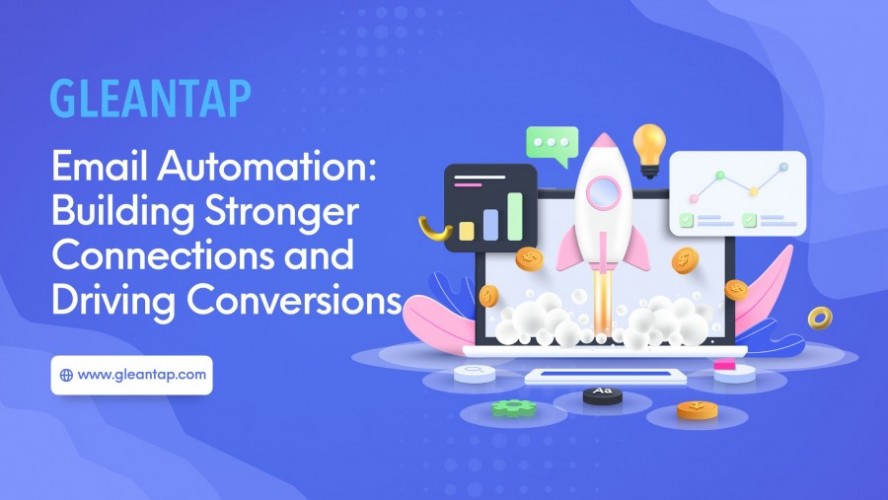-
In the fast-paced world of digital marketing, staying ahead of the curve is crucial for businesses aiming to build stronger connections with their audience and drive conversions. One powerful tool that has proven its worth time and again is email automation. In this comprehensive guide, we will delve into the fundamentals of email automation, explore its benefits, and provide practical tips on how businesses can leverage it to create personalized, engaging, and conversion-driven email campaigns.
Understanding Email Automation
Email automation refers to the use of technology to streamline and automate email marketing tasks. Instead of manually sending individual emails, businesses can set up predefined workflows and triggers that automatically send emails to specific segments of their audience based on their actions, behaviors, or other predefined criteria.
Key Components of Email Automation:
Triggers: These are the events or actions that initiate an automated email. Triggers can include actions such as subscribing to a newsletter, making a purchase, or abandoning a shopping cart.
Workflows: Workflows are a series of automated emails that are triggered by specific actions. They allow businesses to create a sequence of messages that guide subscribers through the customer journey.
Segments: Segmentation involves dividing your email list into smaller, targeted groups based on specific criteria. This allows for more personalized and relevant communication.
Personalization: Personalization is the heart of email automation. It involves tailoring your emails to the preferences, behaviors, and demographics of individual subscribers, creating a more personalized and engaging experience.
Benefits of Email Automation
Time Efficiency: One of the most significant advantages of email automation is the time saved. By automating repetitive tasks, businesses can focus on crafting compelling content and refining their overall marketing strategy.
Personalization: Automation allows for highly personalized communication. Businesses can send targeted messages based on subscriber behavior, preferences, and demographics, leading to higher engagement and conversions.
Consistency: With email automation, businesses can maintain a consistent communication schedule. This regularity helps build trust with subscribers and keeps the brand at the forefront of their minds.
Segmentation: By segmenting their audience, businesses can send highly relevant content to specific groups, increasing the likelihood of conversion. Segmentation can be based on demographics, purchase history, engagement levels, and more.
Increased Revenue: Effective email automation can lead to increased revenue through higher conversion rates and improved customer retention. By sending timely and relevant messages, businesses can nurture leads and encourage repeat purchases.
Getting Started with Email Automation
Define Your Goals: Before implementing email automation, it's crucial to define your goals. Whether you aim to increase sales, nurture leads, or improve customer retention, clearly outlining your objectives will guide your automation strategy.
Choose the Right Email Marketing Platform: Selecting the right email marketing platform is essential for successful automation. Consider factors such as ease of use, automation capabilities, integration options, and scalability.
Build and Clean Your Email List: A clean and well-maintained email list is the foundation of successful email automation. Regularly clean your list by removing inactive subscribers and ensure that your opt-in processes are clear and compliant with regulations.
Identify Key Touchpoints: Map out the customer journey and identify key touchpoints where automated emails can provide value. These touchpoints may include welcome emails, abandoned cart reminders, post-purchase follow-ups, and more.
Create Engaging Content: Crafting compelling content is crucial for the success of your automated emails. Tailor your messages to resonate with your audience, and experiment with different formats such as images, videos, and personalized copy.
Advanced Strategies for Email Automation Success
Dynamic Content: Implement dynamic content in your emails to further personalize the user experience. This allows you to display different content to different segments of your audience based on their preferences or behaviors.
A/B Testing: Continuously optimize your email campaigns by conducting A/B tests. Test different elements such as subject lines, CTAs, and images to determine what resonates best with your audience.
Integrate with Other Marketing Tools: Enhance the power of your email automation by integrating it with other marketing tools, such as customer relationship management (CRM) systems, analytics platforms, and e-commerce solutions.
Monitor and Analyze Performance: Regularly monitor the performance of your automated campaigns. Analyze key metrics such as open rates, click-through rates, conversion rates, and subscriber engagement to identify areas for improvement.
Scale Gradually: As you gain insights and experience, scale your email automation gradually. Introduce new workflows, experiment with different triggers, and expand your segmentation strategy to continually refine and optimize your campaigns.
The Future of Email Automation
As technology continues to evolve, the future of email automation holds even greater promise. Here are some trends to watch for:
Artificial Intelligence (AI) Integration: AI will play a more significant role in email automation, enabling businesses to analyze data, predict user behavior, and deliver even more personalized content.
Interactive Emails: Interactive elements such as polls, quizzes, and product carousels will become more prevalent, engaging subscribers and increasing interactivity within emails.
Cross-Channel Integration: Email automation will be seamlessly integrated with other marketing channels, providing a cohesive and omnichannel customer experience.
Enhanced Personalization: As technology advances, personalization will become even more sophisticated. Predictive analytics and machine learning will enable businesses to anticipate customer needs and preferences with greater accuracy.
Conclusion
In the realm of digital marketing, email automation stands out as a powerful tool for building stronger connections and driving conversions. By embracing the principles of personalization, segmentation, and automation, businesses can create targeted and engaging campaigns that resonate with their audience.
As you embark on your email automation journey, remember to define clear goals, choose the right tools, and continuously refine your strategies based on performance data. By staying informed about industry trends and incorporating innovative approaches, you can position your business for success in the ever-evolving landscape of email marketing. Email automation is not just a trend; it's a dynamic and essential component of a comprehensive digital marketing strategy, offering the potential to forge lasting connections and drive sustainable business growth.
Related Articles
